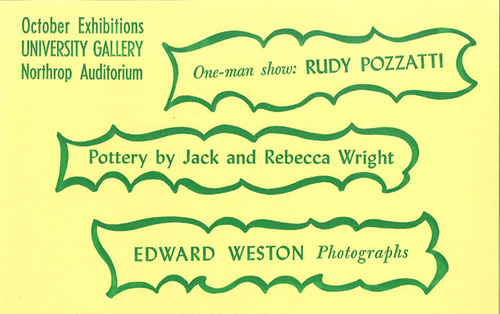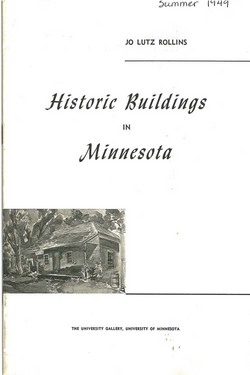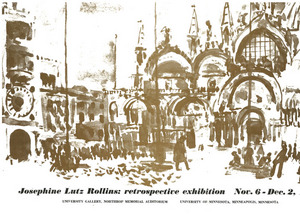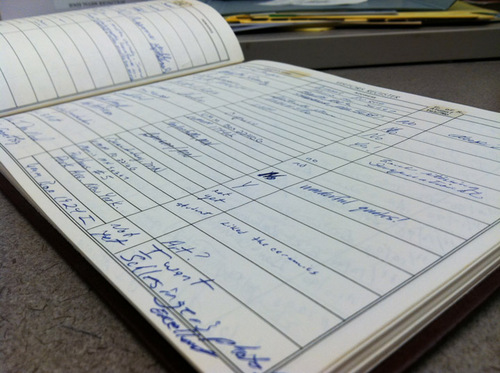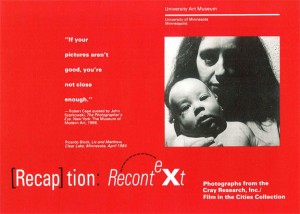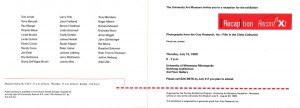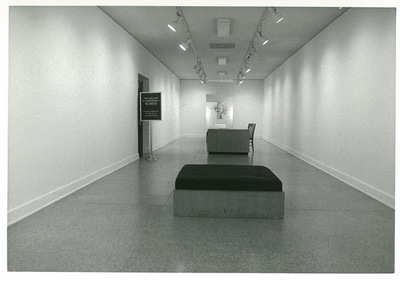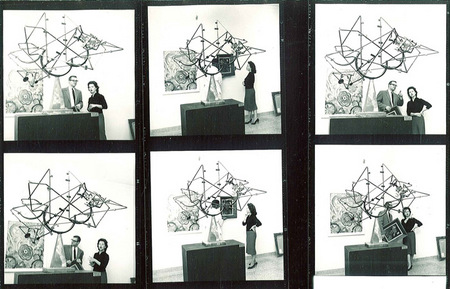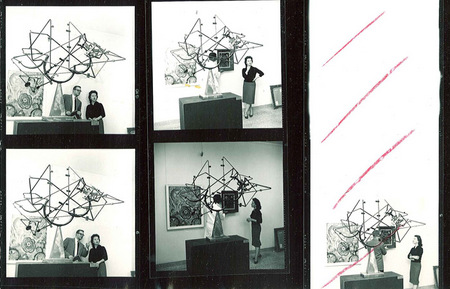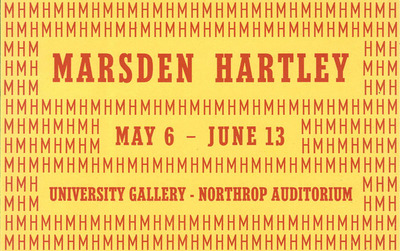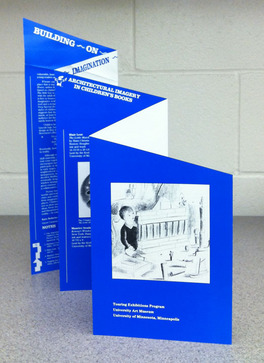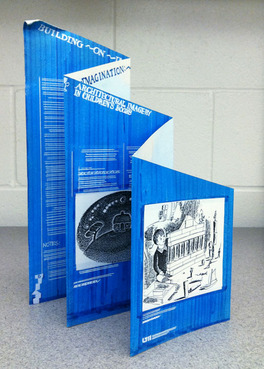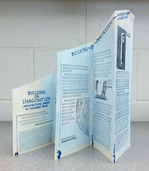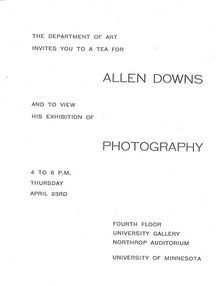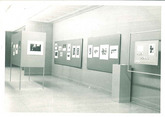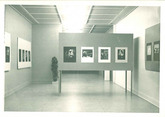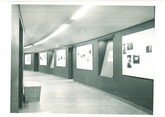I came across an article in the New York Times by Stephen Mihm titled, “The Biographer’s New Best Friend,” that commented upon the usefulness of digitized newspapers to biographers in tracking the whereabouts of the people they are researching.
Digitized newspapers have also aided WAM archives processors by providing context to the materials contained within the collection.
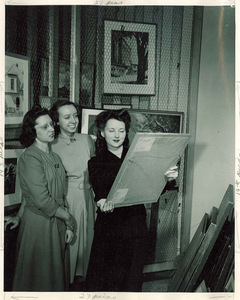 Take for instance a folder that contains excellent photographs… but that also does not include excellent captions or descriptions of said photographs. Last spring on the WAM Files, my co-processor shared excellent photos of the University Gallery’s art rental program that she uncovered while processing. Staff at the University Archives later shared with us additional photos related to the art rental program that are contained in their photograph collection (at left – “Art gallery. lending pictures. 1948.” pictured are Sallie Wruck, Elvie Berggren, and Betty Maurstad, Curator – from the University Archives).
Take for instance a folder that contains excellent photographs… but that also does not include excellent captions or descriptions of said photographs. Last spring on the WAM Files, my co-processor shared excellent photos of the University Gallery’s art rental program that she uncovered while processing. Staff at the University Archives later shared with us additional photos related to the art rental program that are contained in their photograph collection (at left – “Art gallery. lending pictures. 1948.” pictured are Sallie Wruck, Elvie Berggren, and Betty Maurstad, Curator – from the University Archives).
To learn more about the student art rental program, I performed a few keyword searches of “art rental” and “University Gallery” on the MN Daily website (online presence of the student-run University newspaper), and received results from the Daily’s PDF Archives. Upon reviewing my results, I was almost instantly able to learn more about the art rental program and process by accessing these digitized newspaper files:
A January 11, 1944 MN Daily headline informed, “Decorating Those Walls: U Gallery Prints are Renting Fast.” The article indicated that although enrollment had decreased (due to the war), 70 students rented 133 prints, and 16 servicemen borrowed 38 prints. The Gallery also loaned 23 prints to the Navy for USS Minnesota.
In an August 14, 1947 MN Daily article titled, “U Offers Art For Two Bits,” the history of the program and report of student tastes was offered:
“During the first quarter of its operation only 50 prints were rented to students. Since that time the number has increased to about 450 in a regular quarter… According to Betty Maurstad, most of the students are repeat customers. Almost all of them live on campus in dormitories, fraternities, and sororities. Quite a few live in the University village… The few prints of the modernist school in the gallery are becoming more popular. Also there is an increasing interest in sculptured pieces…
…So for a quarter, enjoy your art at home. Choose what you will. Hang it where you like. If you can’t paint one, rent one.”
Thanks to the biographer’s -and the processor’s- new best friend, with a personal computer, internet access, and a PDF reader, you can do your research… where you like.
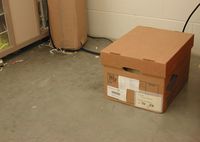 To use a phrase first utilized by former University Gallery Director Ruth Lawrence in a report to the President in the 1940s, the WAM Files project staff recently met to make “appraisal of our position” in processing the WAM archival collection.
To use a phrase first utilized by former University Gallery Director Ruth Lawrence in a report to the President in the 1940s, the WAM Files project staff recently met to make “appraisal of our position” in processing the WAM archival collection.